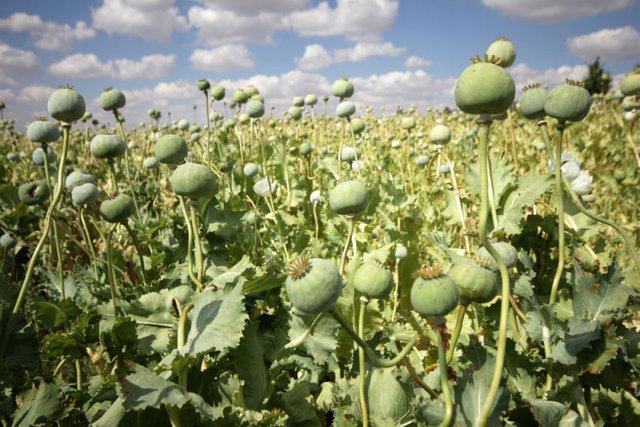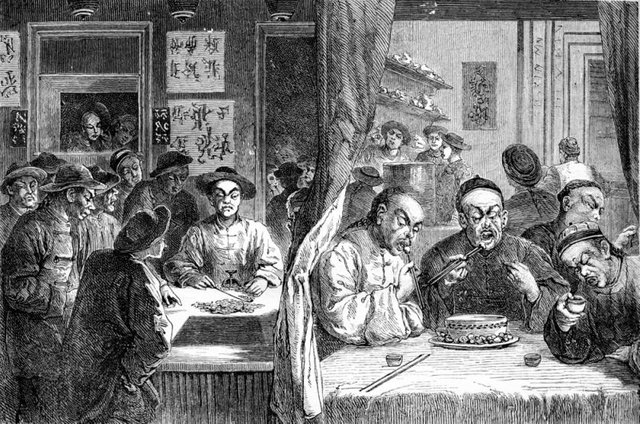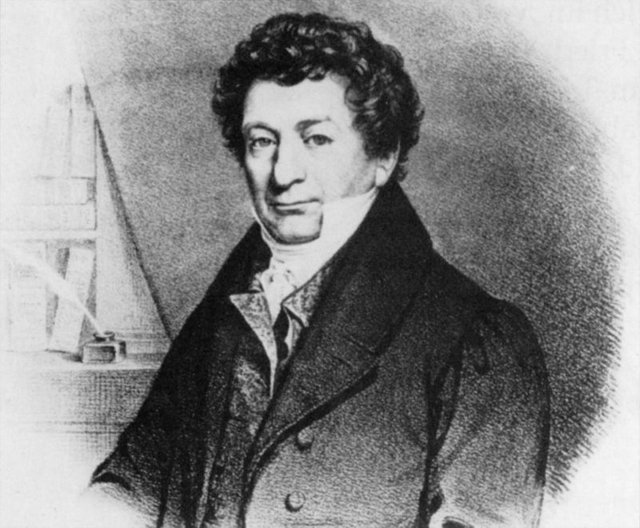
Fuente.
In 1805, opium and alcohol addiction had become a very hard addiction. That same year, the German chemist Friedrich Serturner tries to remedy by experimenting with his own body. It was the 72 hours that gave rise to the discovery and isolation of the active principle of morphine.
It was not the only discovery of this pioneer. Thanks to Serturner, the concept of alkaloid was formulated. And even if it does not seem like it, the experiment he carried out during those 72 hours with three friends would be the beginning of something much bigger. The whole world would end up seeing the problems surrounding the use of certain medicines, which would eventually mean the entry of laws and regulations. They had arrived what we commonly call "hard drugs".
At first it was opium

Fuente.
It is estimated that for at least 7,000 years humans have cultivated the opium or opium plant (Papaver somniferum). It is an annual herbaceous plant whose chemical composition is 10/20% of alkaloids, 5/6% of mineral substances and 20% of sugars and organic acids. These high alkaloid contents are the reason why it has been used to make opium or for the pharmaceutical industry to subsequently use it as a source of drugs such as morphine and codeine.
The first mention of opium was recorded in the Sumerian tablets of the third millennium BC. of C through what was interpreted as "happiness" (Gil), with representations of the poppy. Later the knowledge of its culture would be transferred to Syrians and Babylonians. Finally, the first medical jobs would begin, probably in Ancient Egypt (through many hieroglyphics) where opium is explained and recommended as a painkiller and analgesic.
Little by little he became aware of the addiction that opium could produce.
In Spain we also find another finding with respect to the plant. Specifically in the vicinity of Granada, in the so-called Cueva de los Murciélagos, where capsules of the plant dating from 4,200 BC were found.
Already in the Middle Ages came the first prohibition. And is that we are in a time where everything that came from the East was considered demonic, so opium was banned in Europe, although the development of navigation re-introduced the drug in the late fifteenth and early sixteenth. In this case the story speaks of the Portuguese navigators as the first who probably smoked opium, which would result in immediate effects as opposed to their intake or drink.

Fuente.
In 1522 appears the figure of Theophrastus Paracelsus, an alchemist, physician and Swiss astrologer, with the creation of laudanum. We are talking about one of the most contradictory figures in the history of medicine. A man whose search for "the new" and his continuous struggle and opposition to the tradition and remedies inherited from ancient times made him one of the first modern doctors, ahead of his contemporaries. That same year he developed laudanum, an alcoholic mixture based on opium, which Paracelsus described as an extremely potent analgesic, which is why it should be used sparingly.
From that moment, laudanum was used until the nineteenth century to treat a wide variety of diseases. Several centuries where little by little he became aware of the addiction that opium could produce. And it's right here when the figure of Serturner appears.
Serturner and the discovery of the active principle of morphine.

Fuente.
Friedrich Serturner (1783-1841) was a German chemist and pharmacist who became interested in the effects of opium very early on. At 16 he was apprenticed as a pharmacist and in 1809 he had his first pharmacy. Four years before and while he was in training period, Serturner decided, like many chemists of the time, to try to isolate the active principles of plants.
In this case he carries out a two-year work that leads him to the discovery of "morphine", a work that most colleagues reject and do not consider valid, so he resorts to the only formula that would make his discovery a official finding: he decides to carry out a public experiment on himself and three friends who lend themselves. The idea: to demonstrate that the substance that had been isolated was in fact responsible for the actions of opium.
The four could clearly describe what was happening and what they felt
The work he had started earlier was based on his observations, which indicated that some samples had a clear effect of numbing the pain, while other samples did not. The chemist imagined that opium should contain something that could counteract the pain, but that it could not work unless the dose was high enough. The use of ammonia to separate opium into its basic components isolated what I would later call morphine. But as we say, the finding was not based on a solid test for the time.
Before putting your body to the test, you start the first doses with mice and dogs that you found in your neighborhood. Everyone would die on the way, but Serturner does not give up. He was clear that he was right, so he goes on to try his compound with three friends. The theory in this case was clear: this was the only way to test their study, in addition, the four could clearly describe what was happening and what they felt.
So with 20 years he distributed a first mixture of morphine and alcohol among the participants. The experiment and its effects lasted three days. At the end of it both he and his three friends had consumed about 10 times what could now be recommended for a single dose of morphine.
His writings relate a process where they experienced nausea, fever and dizziness. Serturner came to think that with the experiment they were poisoned, which is why they took vinegar in order to induce them to violent vomit. Then they went through a process described as a "long dream". Finally he related the side effects of morphine: headaches, stomach and extreme fatigue that would last for several days.
One of the great scourges was born in a matter of semi-synthetic drugs: heroin
Serturner achieved his purpose of making the finding official, had isolated the active ingredient of morphine. Not only that, the experimentation itself gave the name to the opiate drug in honor of the Greek god of dreams, Morpheus, due to the profound effect of intense sleep. Thus, in 1817 Serturner markets morphine as an analgesic, becoming the first treatment for the addiction of opium and alcohol.
If we said at the beginning that his experiment was historical, it was because of the consequences that were produced as a result of it. Morphine became the first treatment of several symptoms in medicine. The widespread use of it produced the appearance of hypodermic needles in 1843, which allowed instantaneous and more powerful effects than its oral supply. With it came the first victim by overdose using the needles.
In 1878 an opiate was isolated thanks to the acetylation of morphine hydrochloride, whereby diacetylmorphine was obtained. That said, most will not understand how important it was, but in 1898 diacetylmorphine was marketed by Bayer under the name of ... heroin. Yes, the heroin was at the time "owned" by Bayer, and yes, it was also marketed as a cough sedative and / or as a substitute for morphine, thinking it was less addictive. It was born therefore one of the great blights in a matter of semi-synthetic drugs of consumption, and derived from the morphine itself (originated in turn from the opium plant).
The technological advances of chemistry later discovered that both opiates and their derivatives produced a strong addiction. As a result, at the beginning of the 20th century, the first regulations and control of substances arrived.